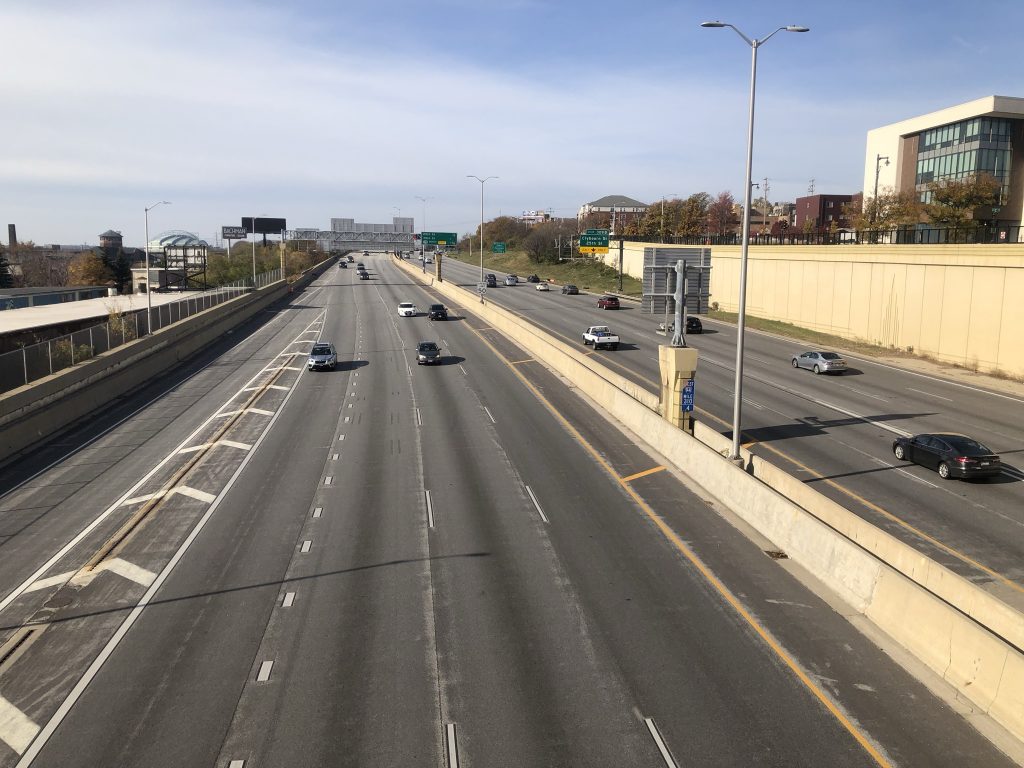The End of Milwaukee’s Rush Hour?
Weekday traffic volumes are down in state and city since 2019. So is bus ridership.
Despite low unemployment rates and a push to return to the office, weekday traffic levels in Wisconsin remain below their pre-pandemic levels. The decrease is greatest during traditional rush hour times.
Meanwhile, weekend traffic counts are regularly eclipsing pre-pandemic levels and truck traffic is at record levels.
“Traffic levels in Wisconsin’s most populous urban counties, as well as ridership on the state’s largest transit systems, show the likely cause is a reduction in the number of people commuting to work. Though weekday traffic may still further recover, the potential for a long-term shift should be considered when it comes to future road construction and transit route decisions,” the WPF report noted.
Relying on data from 15 Milwaukee County sensors, primarily located on freeways, traffic was down 5.3% on weekdays in March 2022 compared to March 2019. Dane County traffic is down 9.8%. But weekend traffic in Milwaukee and Dane counties was only down 3.6% and 6.1% respectively.
Looking at hourly data from Milwaukee and Dane county sensors, morning rush hour traffic (6 a.m. to 9 a.m.) was down 9.5% and by at least 8% in every hour between 4 p.m. and 8 p.m.
Hour-by-hour weekend traffic was down no more than 4% between 11 a.m. to 9 p.m. according to data from the same sensors.
Across Wisconsin, weekend traffic has exceeded pre-pandemic levels in six of the last 12 months. Weekday traffic has not eclipsed pre-pandemic levels in any month.
“In recent decades in the United States, car volume and vehicle miles traveled (VMT) can fluctuate but tend to increase over time. However, today, volume in Wisconsin appears to be only back to what it was at in 2015 or 2016, according to WisDOT data,” wrote WPF.
There is one traffic type that is reaching new heights: trucks. Truck traffic volumes are up 7% when comparing March 2019 to March 2022. Truck traffic has exceeded pre-pandemic levels every month since December 2020.
The WPF report comes as WisDOT is undertaking a supplementary study as part of its effort to expand Interstate 94 through the middle of Milwaukee. When the supplemental environmental impact was announced in April 2021, WisDOT said it would be completed and reviewed at the earliest by late 2022.
The statewide figures rely on an analysis of more than 230 sensors according to the report.
Transit Systems
Wisconsin’s bus systems face an uncertain future given a sizable drop in ridership. Ridership was always trending downward, a result of a confluence of factors, but the pandemic is exacerbating the situation.
Ridership was down 45.6% in 2020 compared to 2019. In 2021, the first full pandemic year, it was down 14.6% compared to 2020. The transit system data comes from the Federal Transit Administration and is only available through January 2022.
“There has yet to be a single month where even one bus system reached the same number of rides as the corresponding month prior to the pandemic,” wrote WPF.
Madison is fairing the worst. “Since the first full month of the pandemic in April 2020, transit ridership in Madison has been down 65% or more from pre-COVID-19 levels. This may be due to factors such as Madison having a higher concentration of its workforce in white-collar jobs with the ability to work from home,” wrote WPF.
Transit systems received an injection of funding as a result of multiple federal COVID-19 relief packages, but the Wisconsin Legislature cut funding for the Madison and Milwaukee systems as a result.
“State and local leaders may need to rethink the state’s roads and transit services to reflect the way Wisconsinites travel in a post-pandemic world,” concludes the report.
A full copy of the report is available on Urban Milwaukee.
If you think stories like this are important, become a member of Urban Milwaukee and help support real, independent journalism. Plus you get some cool added benefits.
Transportation
-
MCTS Adds 28 New Buses
 Jul 13th, 2024 by Graham Kilmer
Jul 13th, 2024 by Graham Kilmer
-
MCTS Designing New Bus Shelters
 Jul 10th, 2024 by Graham Kilmer
Jul 10th, 2024 by Graham Kilmer
-
MCTS Updates RNC Bus Detours To Better Serve Downtown, Riders
 Jul 9th, 2024 by Jeramey Jannene
Jul 9th, 2024 by Jeramey Jannene























I know this isn’t the point of the article, but the roads in Milwaukee are terrible. The condition of roads was bad, but has steadily deteriorated since I arrived six years ago. Driving becomes more dangerous when you are constantly avoiding monster potholes. It also wreaks havoc on cars. It’s a safety issue as well as an aesthetic issue. Where is state funding? Where is the all the money Milwaukee contributes to the state?